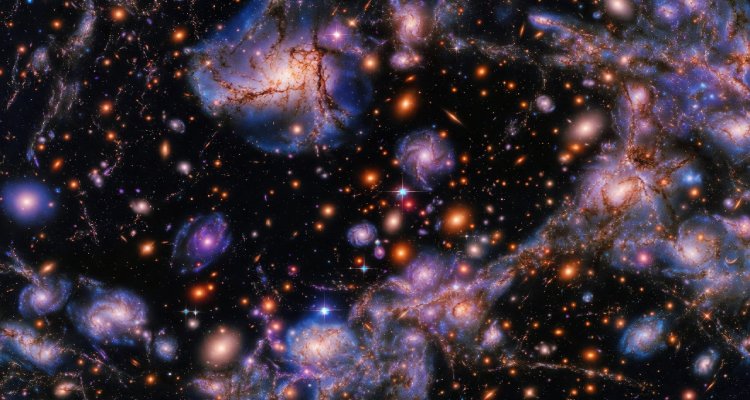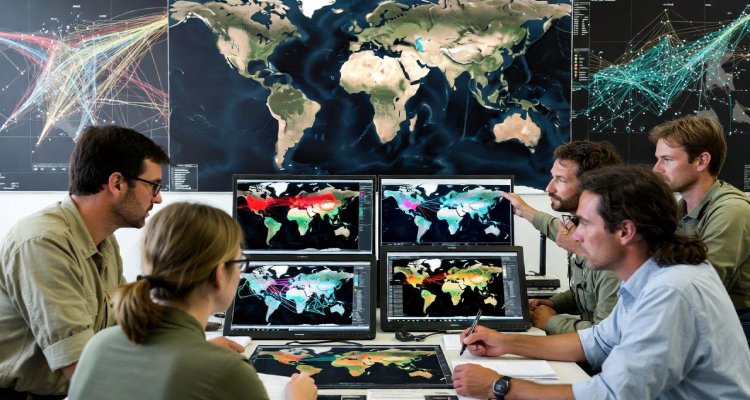Beyond the Blue: Unraveling the Secrets of Deep Space
Scientists are venturing farther than ever into deep space, unlocking cosmic mysteries and reshaping humanity’s understanding of the universe.
Introduction: A Journey into the Unknown
On a silent stage beyond the blue skies, where light bends and time stretches, humanity’s most profound questions echo across the cosmos: Are we alone? What lies beyond our galaxy? How did it all begin? Deep space—the unfathomable expanse beyond our solar system—holds secrets that could redefine everything we know. And now, with cutting-edge technology and renewed scientific ambition, we are closer than ever to unraveling its cosmic mysteries.
Context & Background: From Star Gazing to Star Chasing
For millennia, humans have looked up in wonder. Ancient civilizations tracked celestial movements with stone observatories. Galileo turned his telescope skyward in the 1600s and revolutionized astronomy. But the term “deep space”—typically referring to regions far beyond Earth’s immediate surroundings, including other galaxies and interstellar voids—remained largely unreachable.
That changed in the 20th century. Space agencies like NASA, ESA, and private players like SpaceX have launched sophisticated probes, telescopes, and spacecraft capable of peering billions of light-years away. Landmark missions such as the Hubble Space Telescope, Voyager 1 and 2, and the recent James Webb Space Telescope (JWST) have ushered in a golden era of deep space exploration.
Main Developments: What We’re Discovering in Deep Space
1. The James Webb Breakthrough
Launched in December 2021, NASA’s JWST has already delivered paradigm-shifting data. By observing in infrared, it peers through cosmic dust to witness the formation of the first galaxies just 300 million years after the Big Bang. Scientists are now rethinking early universe timelines and the birth of stars and black holes.
2. Exoplanet Atmospheres
Using both JWST and earlier missions like Kepler, astronomers have identified over 5,500 exoplanets—worlds orbiting stars beyond our solar system. More remarkably, they’re now studying their atmospheres. Recently, signs of carbon dioxide and water vapor have been detected in several “Goldilocks Zone” planets, where life might be possible.
3. Interstellar Voyages
NASA’s Voyager probes, launched in 1977, have officially exited our solar system. They’re sending back data from interstellar space—regions untouched by the Sun’s magnetic field. The radiation, plasma waves, and cosmic ray information collected is invaluable for future crewed missions beyond Mars.
4. Dark Matter and Cosmic Structure
Recent deep-field images from JWST and data from the Dark Energy Survey suggest the universe’s structure may be different from what the Standard Model of Cosmology predicts. Dark matter—the mysterious substance that makes up about 27% of the universe—continues to evade direct detection but shapes everything we see.
Expert Insight: A New Cosmic Renaissance
“We’re in a revolution of understanding,” says Dr. Lisa Kaltenegger, director of Cornell’s Carl Sagan Institute. “What we’re seeing in deep space is not just beauty—it’s data that could lead us to life beyond Earth.”
Astrophysicist Dr. Ethan Siegel notes, “Each discovery pushes the boundary of the known universe. From galaxy formation to chemical fingerprints of alien atmospheres, we’re finally seeing the universe’s blueprint unfold.”
Public fascination mirrors scientific excitement. Online communities are abuzz with interpretations of JWST imagery and discussions on UFO disclosures, signaling renewed popular interest in the cosmos.
Impact & Implications: Redefining Our Place in the Universe
Deep space exploration isn’t just about distant stars—it affects Earth in tangible ways:
- Search for Life: Discoveries of organic molecules and Earth-like atmospheres on exoplanets fuel the hunt for extraterrestrial life, which could have profound implications for religion, philosophy, and science.
- Technological Innovation: Instruments built for deep space missions often lead to Earth-based applications, from medical imaging to environmental monitoring.
- Future Colonization: Missions to Mars and beyond are only the beginning. Learning how to survive in deep space could one day enable humanity to colonize exoplanets.
Yet, challenges remain—cosmic radiation, propulsion limitations, and massive distances. A round-trip to the nearest star, Proxima Centauri, would still take over 80,000 years with current technology. Still, each step forward brings us closer.
Conclusion: The Cosmos Awaits
In a time marked by division on Earth, deep space offers a rare unifying vision—one that transcends borders and backgrounds. As new telescopes gaze beyond our galaxy, as probes whisper from the edge of the solar system, and as scientists decode the signals of ancient stars, we are writing the next chapter of our cosmic story.
The secrets of deep space are vast and humbling. But for the first time, we have the tools, knowledge, and will to seek them.
Beyond the blue lies not just the unknown—but the future.











